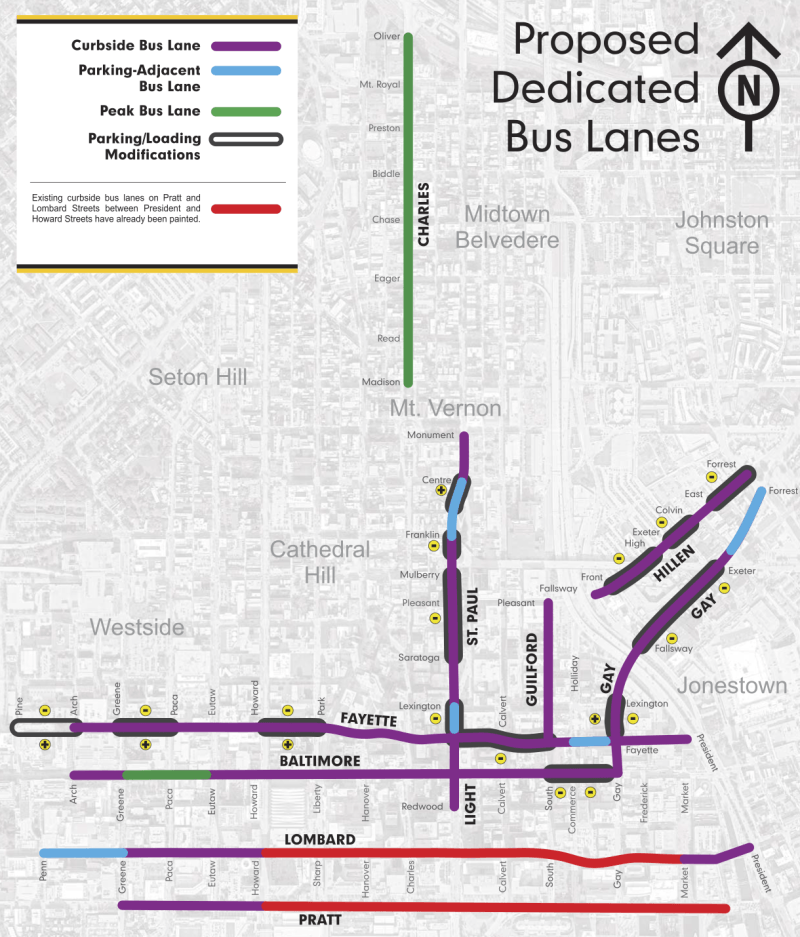Bright red bus lanes are being painted in downtown Baltimore as the city prepares to launch a revamped bus network in just over a month.
Downtown Baltimore has had bus lanes on Pratt and Lombard streets since 2009, but they were not painted red, were rarely enforced, and were frequently ignored by drivers, according to WBAL.
Now, bus lanes on those two streets and several others will get the red paint treatment. The lanes will be enforced by city police and traffic enforcement officers, as well as police from the state-controlled Metropolitan Transportation Authority, which operates the bus and rail system. Motorists face a $90 fine and one point on their license for driving or parking in the bus lane.
All told, nine streets will have bus lanes. Those routes are where the number of people riding in a bus lane is projected to exceed the number of people moving in a single car lane. The Lombard Street bus lane, for example, moves 1,000 people per hour, compared to 700 people per hour in a car lane, according to the MTA [PDF].
While the bus lanes are going to speed up trips for riders, they're also a bittersweet reminder of Governor Larry Hogan's decision to cancel construction of an east-west rail link across Baltimore, the Red Line. Hogan used the state's portion of Red Line funds to pay for rural and suburban highway projects elsewhere in the state, prompting a federal civil rights investigation. He announced a bus improvement initiative called BaltimoreLink soon after.
In addition to the bus lanes, BaltimoreLink includes transit signal priority on two major routes heading north from downtown and a reorganization of the city's bus network. Color-coded CityLink routes will run every 10-15 minutes during peak hours, forming a grid downtown and radiating outward. LocalLink routes will provide service between neighborhoods and from suburb to suburb. In addition to the state-run MTA buses, the city will continue to operate its free Charm City Circulator buses downtown.
The changes go into effect on June 18. The MTA has set up a before-and-after trip planner to help riders navigate the new routes. It's also released a new system map with a distinctive radial style.
The state has been billing BaltimoreLink as a $135 million expansion of bus service, but an analysis of an early version of the plan last year by the Central Maryland Transportation Alliance showed that while the changes would result in a slight improvement in accessibility to jobs on weekdays, there would be a sharp decrease on weekends.
CMTA supports efforts to revamp bus service, but wants better metrics so the public can determine whether the state is achieving its goals -- particularly for the downtown bus lanes, which the alliance says are critical to the success of BaltimoreLink.
“It could be better if they establish benchmarks," said Brian O'Malley, CMTA's president and chief executive. "What is the average speed of buses through that corridor, and has it improved with the dedicated lanes? That would be valuable for telling the public why we’re doing this and whether it’s working.”






